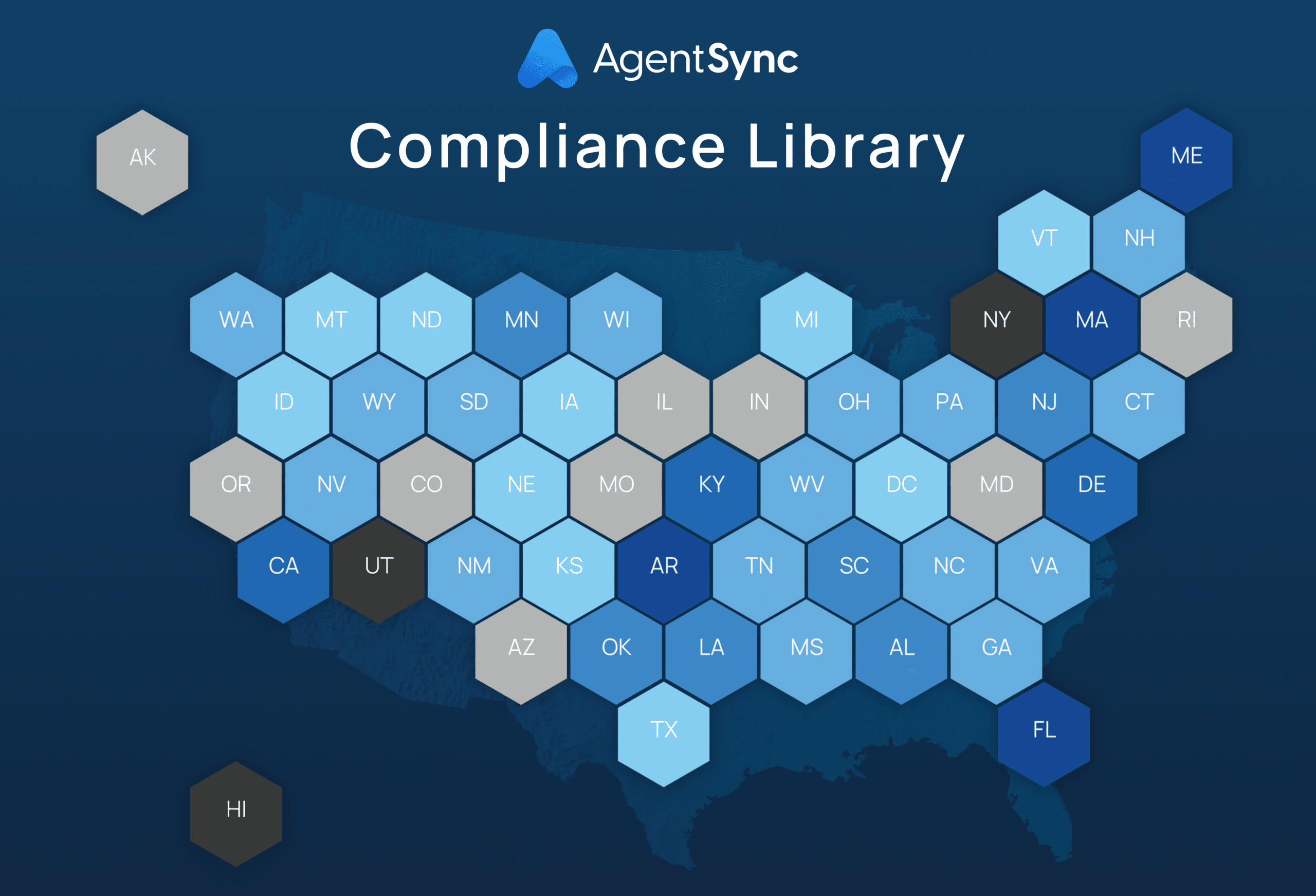

State-by-state variations of laws, compliance protocols, industry transparency, and general regulatory culture can lend one the impression that keeping up with industry changes is a little bit like herding cats. So, what better way to wrangle some of the more localized insurance news than in a Regulatory Roundup?
On an ongoing basis, in no particular order or rank, we’re wrestling the various regulatory changes, compliance actions, and commissioner decisions into our roundup. As a disclaimer: There’s a lot going on at any given time in these here United States, so this isn’t a comprehensive picture of state-level action by any means. Think of it, instead, as a sampler platter of regulation.
Also important to note: If we’re recapping interpretations of legal decisions, this is some armchair insurance speculation and not at all legal advice. If you need legal advice, get a lawyer.
The 2024 Insurance Regulation Report Card is here
On Dec. 12, 2024, the R Street Institute released the 11th edition of its Insurance Regulation Report Card. The report, authored by R Street Finance Insurance and Trade Policy Director Jerry Theodorou, evaluates the effectiveness of P&C insurance regulation across all 50 states. Each iteration of the report focuses on three main questions:
- How free are consumers to choose the insurance products they want?
- How free are insurers to provide the insurance products consumers want?
- How effectively are states discharging their duties to monitor insurer solvency and foster competitive, private insurance markets?
To gain a better understanding of which states are promoting a healthy, competitive market, the report evaluates all 50 states against seven broad categories:
- Solvency regulation
- Underwriting freedom
- Residual markets
- Fiscal efficiency
- Politicization
- Auto insurance market competitiveness
- Homeowners insurance market competitiveness
Each state is given a final grade (A+ through F-), a ranking, and a short summary of strengths and weaknesses. For example, let’s take a look at the results for AgentSync’s home state of Colorado. The Centennial State scored a B this year and was ranked 24th in the nation. Strengths include low politicization, no regulatory surplus, and no runoff obligations. Weaknesses include a high auto loss ratio, an extremely high homeowners loss ratio, a large workers’ compensation state fund, and territorial restrictions on reinsurance costs.
Overall, this year’s report concluded that the states are doing an effective job encouraging competition and maintaining solvency, despite 2024 being a turbulent year for the P&C market. However, there are still a number of cases in which state-by-state insurance regulations lead to inefficiencies, such as in regulators’ authority to approve insurance rate changes. How’d your resident state score?
California expands coverage for wildfire prone areas
In a Dec. 13, 2024, news release, California Insurance Commissioner Ricardo Lara enforced his “first of its kind” catastrophe modeling and ratemaking regulation for the state. The regulation is a central piece of Lara’s Sustainable Insurance Strategy, aimed at increasing coverage in the more wildfire-prone areas of California.
“Giving people more choices to protect themselves is how we will solve California’s insurance crisis,” said Lara. “For the first time in history we are requiring insurance companies to expand where people need help the most.”
For the past 30 years, California regulators have required insurance companies to apply a catastrophe factor to insurance rates based on historical wildfire losses, rather than using models that predict real future losses based on the current state. The outdated regulations have contributed heavily to rate spikes across the state following major wildfire disasters. Thanks to the initiative, major insurance companies in the state, as well as smaller, regional insurance companies, must increase the writing of comprehensive policies in wildfire-prone areas equivalent to no less than 85 percent of their statewide market share.
Advocates say the initiative “should give consumers hope that competition and options will be returning.” And that, “This will help the entire state plan and prepare for loss more effectively.” Overall, hopes are high that this marks a positive turning point in the turbulent P&C market and that other states may soon follow suit.
Other state regulatory changes
California citizen Jingjin “Kathy” Bian was arraigned on felony charges on Dec. 10, 2024, after allegedly receiving over $900,000 in undeserved long-term care insurance benefits for her and her father. Bian, a former insurance agent, and her 81-year-old father each received caregiver reimbursement from their insurer. However, surveillance observed both individuals performing activities independently with no caregiver present, directly contradicting their claimed disabilities. Bian is currently out on bail and is scheduled to return to court on April 16, 2025.
Colorado is transitioning to the SLIP platform. Effective Jan. 1, 2025, all policies and endorsements on policies for surplus lines premium taxes shall be reported to the Colorado Division using the SLIP platform.
Florida is retiring the legacy SLIP platform and transitioning to the SLIP+ platform. Effective Dec. 31, 2024, SLIP will be permanently taken offline and all users will be required to use SLIP+. The state thanks users for their willingness to embrace the change.
Georgia announced that it’ll continue requiring the appointer’s tax number for appointments and terminations for electronic applications. The state is also increasing its appointment fees from $16 to $20.
Kansas is implementing a reapplication fee for nonresident license applicants who are reapplying anywhere from 91 to 365 days past their license expiration date. The fee consists of a $100 reinstatement fee and a $50 application fee for a total of $150.
Louisiana is now requiring all applicants to renew all renewable lines of authority within the same license class in the same transaction. Effective Jan. 9, 2025, the state won’t permit any partial renewals.
Maryland has named a new Deputy Commissioner of Insurance Administration. Congratulations to Joy Y. Hachette, who previously served as Interim Commissioner of the Insurance Administration, overseeing the agency during the search for a new Insurance Commissioner.
Pennsylvania issued a bulletin providing additional clarification and modernization updates to its Administrative Code, resulting in a modernized and streamlined experience that’ll give more transparency and efficiencies to the public, licensees, and other stakeholders. We love to see it!
Utah issued a bulletin providing guidance and reinforcing the requirements for suitability in annuity transactions. The state reminded insurers that, when recommending the sale of an annuity including an exchange or replacement of an annuity, a producer shall act in the best interest of the consumer under the circumstances known at the time the recommendation is made without placing the producer’s or the insurer’s financial interest ahead of the consumer.
Wisconsin posted a bulletin reminding insurance companies that they must submit notice of agent termination to the commissioner within 30 calendar days of the termination date.
Stay on top of regulatory changes with AgentSync
While these points of interest aren’t comprehensive, our knowledge of insurance producer and variable lines broker license and compliance maintenance is. See how AgentSync can help make you look smarter today; head over to the Compliance Library and wrastle up some state-by-state regulation and more jurisdictional updates. If you’re looking for a solution that builds regulations like these into your distribution channel management workflows automatically, AgentSync can help. See us in action or talk to one of our experts today.

